Want to learn all about custom fire pits?
Few things beat the comfort of gathering around a fire pit with friends, sharing stories, or roasting marshmallows with the kids. Whether you dream of a quiet corner or a built-in barbecue grill setup, a well-designed fire pit can elevate your backyard from average to unforgettable.
This guide walks you through the basics of planning, building, and personalizing a fire feature that brings style and purpose to your space. From fuel choices like wood, propane, or pellet fuel to durable materials like paver bricks, carbon steel, cast iron, or reinforced concrete, we’ll show you how to merge beauty with function without overcomplicating the process.
Keep reading to learn about custom fire pits, fire pit design tips, and how to add an outdoor fire pit!
Custom Fire Pit Guide & What to Know
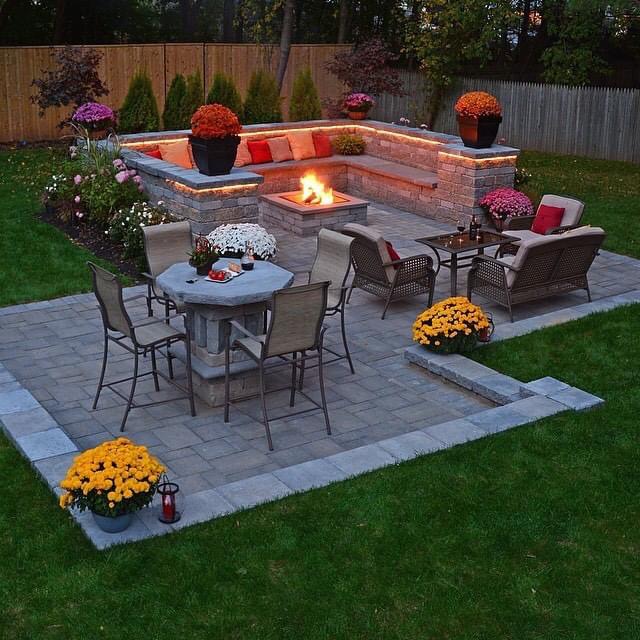
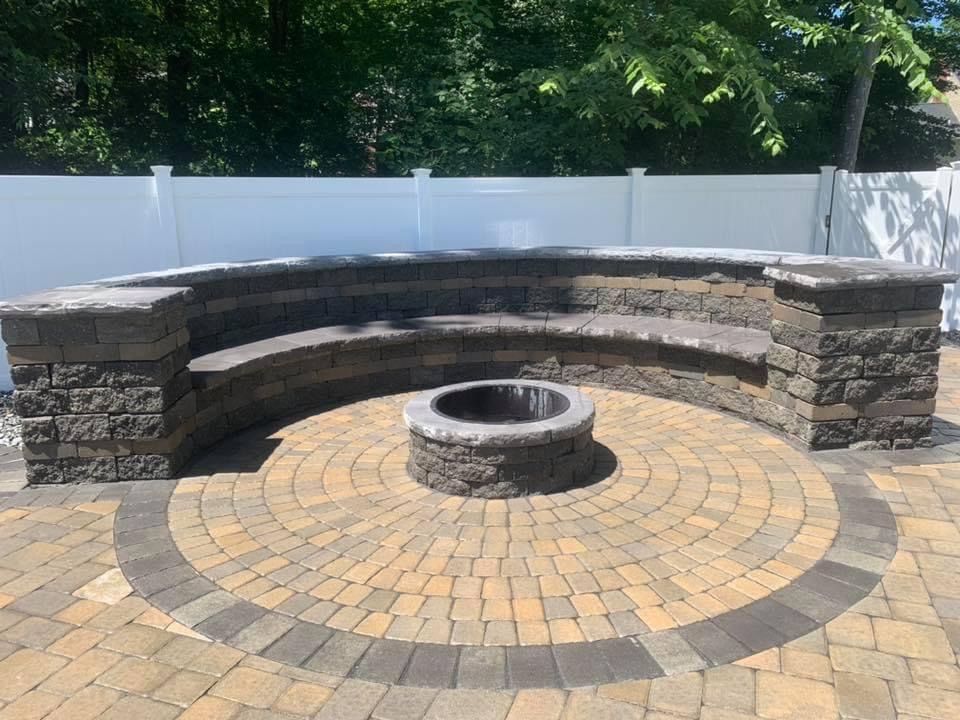
What should you know about outdoor fire pits? Quite a bit, for starters! Before you ever add a new fire pit to your backyard or place of business, you will want to start with your options. Whether you live near Savannah, GA, or elsewhere, starting with the type of fire pit and your budget is your first step!
1. Understanding Custom Fire Pits – What Are They and Why Do They Matter?
A personalized fire pit isn’t just a backyard upgrade—it’s a lifestyle piece. It adds warmth, character, and aesthetics to your outdoor space—especially when tailored to your hardscape design. These fire pits are often built using long-lasting materials like volcanic rock, carbon steel, and cast iron.
Some homeowners even opt for custom steel fire pits for their durability and clean lines. Depending on your fuel choice—wood, ethanol, propane, or pellet fuel—you can use it for cozy chats or full-on grilling sessions. Proper combustion design and airflow control help improve safety and performance.
A well-built system can handle wind-related flame issues, distribute heat evenly, and reduce fuel waste, making your setup more efficient and eco-friendly. Want long-term value? A well-planned hardscaped fire pit can boost your home’s aesthetics and market appeal.
In fact, according to the National Association of Landscape Professionals, adding a fire feature could increase your home’s value by up to 15% (hardscaping is great for ROI). When it comes to fire pit options, from least expensive to most expensive, here are your options:
- DIY hole and rocks
- A steel or metal fire pit from the hardware store
- Concrete blocks
- Pavers
- Bricks
- Flagstone or river rock
2. Planning Your Outdoor Fire Pit Project – How Do You Effectively Strategize Your Design?
Great backyard design starts with smart planning.
Before anything gets built, think about how you want the space to look and feel. Are you imagining late-night chats by the fire or working in a barbecue grill for cookouts? Start by measuring your space and sketching ideas.
Are you installing on a patio or deck or blending it into a larger hardscape design? Your layout should match your lifestyle—whether that’s rustic charm with stone or a sleek stainless steel finish. Then, set your budget. Add a cushion for materials like brick, pavers, or optional upgrades such as a custom fire table. If you want low-maintenance options, materials like glass fiber reinforced concrete offer both durability and visual appeal.
Leave space between your fire pit and nearby structures. Choose landscaping materials that are fire-resistant and easy to clean. And always include a solid base—it helps prevent settling and keeps your backyard oasis safe for years to come.
3. Integrating Hardscaping With Fire Pit Design – How Can You Seamlessly Blend Structures?
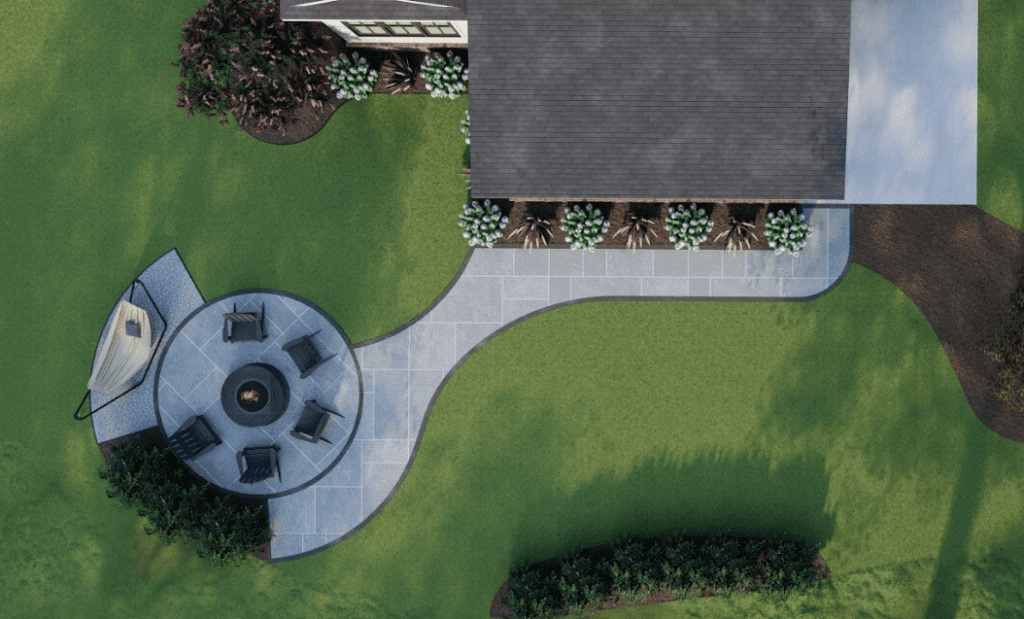
A great fire pit design doesn’t stand alone—it blends into the space around it. You’ll want to tie your fire pit into your patio, deck, or surrounding landscape to make it feel like it belongs. This is where hardscaping comes in.
Combining elements like retaining walls, stone pavers, or flagstone, you can create natural transitions that make your fire area look polished, not patched together. For example, framing a custom fire pit with a curved flagstone seating wall gives your backyard a built-in gathering zone that feels intentional.Want it to look cohesive? Stick to a consistent color palette—like charcoal and warm wood tones.
Don’t forget to add lighting that highlights pathways and sets the mood after dark. Details like that boost aesthetics and safety. You can also plan for extras like a patio heater, space for lawn furniture, or even a small bonfire area for bigger crowds. The goal is to make every part of your backyard work visually and functionally together.
4. Selecting Materials for Custom Fire Pits – What Are the Best Components?

The right materials make your personalized fire pit last longer and perform better without much maintenance. The most common choice is concrete pavers for your new custom fire pit! They are hardy, low-maintenance, and very customizable.
Aside from paver bricks, there are other fire pit materials, and here’s what we recommend:
- Cast iron: Retains heat well and handles weather like a champ
- Carbon steel fire pits: Great for a modern look and industrial durability
- Concrete or reinforced concrete: Adds strength and structure for patios and built-in pits.
- Flagstone or pavers: Ideal for stylish and safe bases
If you love that natural weathered look, try a patina finish that deepens over time without looking worn out. When choosing fuel—wood-burning setups, propane units, or even natural gas—make sure the materials match the system’s heat demands.
For example, carbon steel is perfect for high-heat setups, while heat-resistant glass can add a touch of sparkle and safety.
Are you thinking of upgrading? Research shows that investing in premium materials like these can extend your fire feature’s life by up to 40%, more years, fewer replacements.
5. Custom Features and Enhancements – What Unique Additions Can Elevate Your Fire Pit?

Want your fire pit to stand out? Add custom features that turn it into the centerpiece of your backyard.
Here are a few ideas:
- Add a patio around your custom fire pit
- Smart ignition systems with remote control or app access
- Adjustable flame settings for better combustion and fuel control
- Metal art or sculpture-style features that double as functional art, built-in seating or side tables for drinks and snacks
- LED lighting that changes color or syncs with your home automation setup
Looking for serious style? Try using heat-resistant glass around the flame or adding sculptural elements with metal art. These touches bring a whole new layer of aesthetics to your outdoor setup.
And if you’re planning to entertain, make space for a barbecue grill, add comfy furniture, and let that fire pit be the backdrop for late-night talks, warm drinks, and easy nights at home.
6. Installation Methods for Custom Outdoor Fire Pits – How Do You Ensure Longevity and Safety?
The right fire pit installation doesn’t just look great—it keeps your space safe for years to come. Every project should start with solid construction and a stable base. That usually means pouring a layer of reinforced concrete to prevent shifting or cracking.
If you’re using propane, don’t cut corners. Install a dedicated gas tank line with shut-off valves and proper ventilation. For wood-burning fire pits, ensure safe airflow and plan your layout away from flammable structures like pergolas or fences.
Other musts:
- Use fire-resistant materials like concrete, brick, or pavers
- Include drainage to keep out standing water
- Anchor with non-corrosive fasteners to prevent long-term rust
Modern systems often include an innovative ignition system, heat shields, or spark guards. These upgrades improve combustion control and help you enjoy your fire pit safely, whether you’re grilling, hosting, or relaxing under the stars.
7. Maintenance and Safety for Custom Installations – How Do You Prolong Your Fire Pit’s Life?
Like any outdoor feature, a fire pit needs some TLC to keep it working and looking good. It starts with regular maintenance.
Check for:
- Rust or cracks in the concrete base
- Build-up of ash or debris inside the chamber
- Worn parts in the ignition system (if this applies)
- Paver hardscape fire pits need less maintenance
Depending on the type of fire pit, do a deep clean twice a year. That means scrubbing soot, inspecting seals, and ensuring parts like the stove grate or gas valves still work safely. If you use wood, clean the chamber after heavy use to protect the combustion zone and prevent unwanted flare-ups when this may apply.
Pro tip: add a spark screen if you don’t already have one. It reduces flying embers and helps keep the backyard safe.
You can also use the off-season for light updates—swap out worn pavers, perform minor repairs, upgrade lighting, or freshen up your layout with new plant beds or containers. These little fixes protect your investment and improve your space long-term.
8. Showcasing Inspiring Custom Fire Pit Projects – What Are Some Real-World Examples?
Seeing real projects in action is the best way to get ideas for your backyard.
At Coastal Hardscapes of Georgia, we’ve built everything from small custom outdoor fireplaces to full outdoor lounges with curved seating, planters, and even built-in cooking areas for year-round entertaining.
One standout project paired a modern fire pit with concrete pavers, low walls, and a long paver walkway that curved into a sunken lounge. Another client added a tall privacy hedge and garden lighting that softly glowed through volcanic rock ground cover, blending structure with nature. Our most recent fire pit and patio in Savannah Quarters (pictured above) seamlessly connects the homeowner’s existing screened-in porch area to a new fire pit.
Looking for a pop of color? Try rust-toned cast iron or stainless steel with warm wood seating. Thinking rustic? Use weathered stone, soft lighting, and native plants for a more natural look. Whatever you decide, we can help you design the ultimate outdoor space!
These projects highlight how much a custom fire pit can change an outdoor space. Whether your style leans minimalist or bold, you’ll find plenty of design and garden design inspiration by walking local yards, flipping through online portfolios, or chatting with the Coastal Hardscapes team.
Frequently Asked Questions About Custom Fire Pits
1. What common challenges arise during fire pit installation?
Several issues can come up during fire pit installation, especially without proper planning. Uneven ground can cause shifting over time, especially if the base isn’t reinforced concrete. There’s also the risk of poor airflow if the pit is placed too close to fences or walls.
You’ll want to ensure your installer uses fire-resistant materials, leaves enough combustion space, and accounts for water drainage so you don’t pool debris or trapped water under the base.
2. What’s the best fuel type for my fire pit?
That depends on how you plan to use it. Wood offers that classic crackle and bonfire feel, but requires more cleanup and storage space. Propane and natural gas are cleaner, easier to start, and better for low-maintenance setups.
Pellet fuel is also gaining popularity if you want portability and a modern flair. Whatever you choose, be sure your fire pit materials can handle the heat and support proper combustion for safety and efficiency.
3. Do I need a permit to install a fire pit in my yard?
In many cases, yes—especially for gas-connected or built-in fire pits. Local codes vary, but most require permits for gas lines, tank hookups, or fixed construction. Even wood-burning units may have rules about placement, size, and clearance from buildings.
Always check with your local permitting office or have your landscape designer or contractor do it. It’s a small step that can save big headaches later.
4. Can I integrate a gas line for a propane fire pit?
Yes—and it’s a smart upgrade. Adding a propane line with a secure tank, shut-off valves, and pressure-tested fittings boosts both safety and performance. It makes daily use simple and adds efficiency, especially if paired with an ignition system.
Just be sure it’s done by a licensed professional who knows the local codes. A clean install also means your fire pit will be easier to maintain and operate year-round.
5. How often should I inspect my custom fire pit?
You should check your fire pit at least twice a year—ideally in spring and fall. Look for cracks in the concrete, worn-out fasteners, or signs of rust around the structure or stainless steel elements. If your pit sees heavy use or your area experiences harsh weather, inspect it after major storms.
Staying on top of maintenance helps prevent combustion issues and keeps your system safe and efficient.
6. What design trends are popular in current fire pit projects?
Most fire pits are still infusing paver bricks for the classic to modern look that most homeowners desire. Fire pit styles are all about balance—clean lines with natural texture. You’ll see sleek stainless steel, volcanic rock, and innovative features paired with reclaimed wood, brick, and native garden plants. Many designs are minimalist but not dull.
Think low-profile pits, hidden fuel sources, and layered lighting to create depth and ambiance. If you’re looking to entertain, built-in seating, patio heaters, and cooking spaces are trending too.
7. Is it possible to retrofit an existing fire pit with innovative features?
Absolutely. If your fire pit has good bones, you can add external smart upgrades like remote-controlled ignition systems, flame height adjustments, or heat sensors.
Many kits work with propane or natural gas systems; newer models even connect to home automation apps. Just be sure to get advice from a pro first, especially if you’re dealing with older construction or want to integrate high-end tech safely.
8. Can a fire pit be added to an existing patio?
Yes, and it’s a common request we often get here at Coastal Hardscapes. A fire pit can be integrated into an existing patio if there’s enough space and the surface is stable—ideally, concrete, pavers, or reinforced concrete. You’ll want to ensure the area is level and clear of combustible items like certain furniture or plants. If you’re unsure about spacing or design, a pro can help you map out a safe and seamless layout with your current setup.
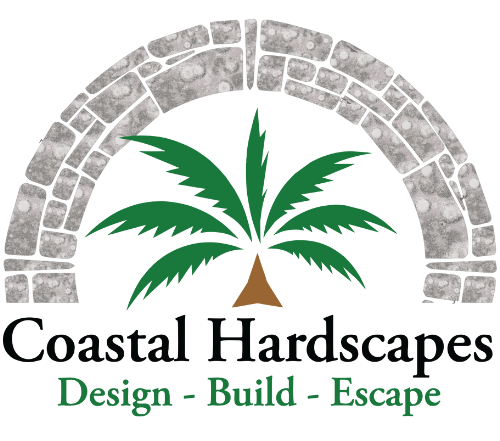
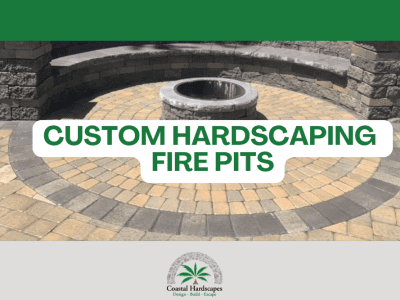
 The 5 Best Walkway Materials for Your Yard & Pro Design Tips
The 5 Best Walkway Materials for Your Yard & Pro Design Tips